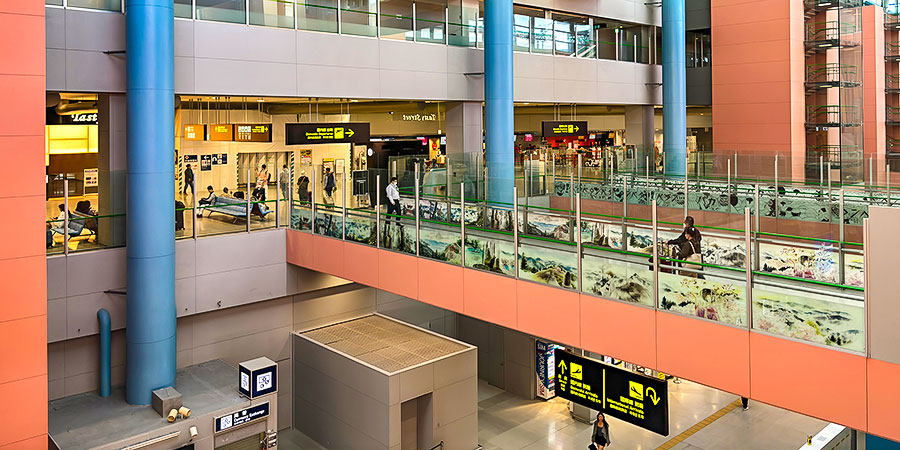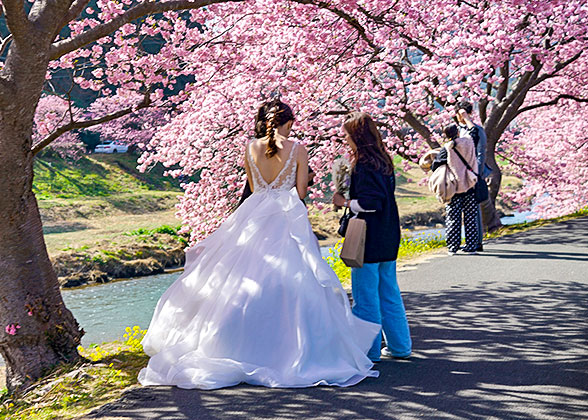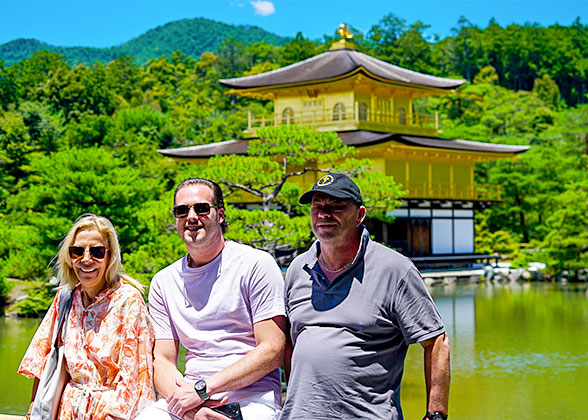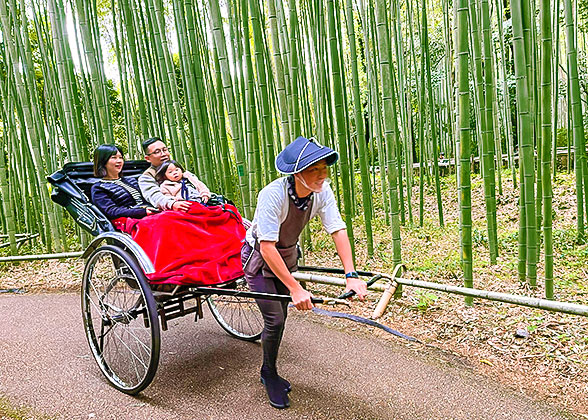- Do I Need a Visa?
- Visa-Free Travel
- How to Plan Your First Japan Trip
- How Long to Stay
- How to Spend One Week
- Cheapest Month to Visit
- Expensive Months to Visit
- Is There a Big Language Barrier
- Is It Safe to Travel in Japan
- How Much Does a Japan Trip Cost
- Payment Codes
- Money Exchange
- Currency in Japan
- 10 Things to Know Before Departure
- 15 Tips for First-Timers
- Top 6 Hiking Destinations
- WiFi & SIM Card
- Power Sockets
- Ultimate Guide for Hiking/Trekking
- Are Vaccines Needed?
- China’s Tourism VS Japan’s Tourism
- Do I Need to Tip
15 Tips for First-Time Travelers to Japan
Here are some tips for travelling to Japan, expected to be helpful for the first-time travelers to this oriental land.1. Which airport to Fly to
Japan has 4 major international airports operating flights from the world, as Osaka and Nagoya are also accessible for entry to Japan apart from Tokyo. These airports are Narita Airport (NRT) and Haneda Airport (HND) in Tokyo, Kansai International Airport (KIX) in Osaka, and Central Japan International Airport (NGO) aka Chubu or Centrair Airport in Nagoya. Haneda Airport, also called Tokyo International Airport, is closer to Tokyo downtown than Narita Airport.
![]() Read more about Japan Transportation by Air
Read more about Japan Transportation by Air

Kansai International Airport in Osaka
|
2. Buy Japan Rail Pass Before Going to Japan
Japan Rail Pass allows oversea tourists to take JR trains unlimitedly in the region or nationwide within a certain period. If you plan to take trains often on your Japan trip, a Japan Rail Pass can help to save a sum of money. However, you have to purchase it before your arrival in Japan via the official website or travel agencies.
![]() Read more about How to Buy and Use Japan Rail Pass
Read more about How to Buy and Use Japan Rail Pass
3. Learn Some Japanese Phrases in Advance
Because English is not the official or common language in Japan, you’d better learn some simple daily expressions in Japanese, such as those to give regards, ask directions, order in restaurants, etc. You may also take screenshots of Japanese addresses to help you get to the right place when taking a taxi or other public transportations.4. Get a Local SIM Card or Pocket Wifi
You need to keep a smooth network engaging to make sure you can stay connected with your family and friends after arriving in Japan. The local SIM card or pocket Wifi are popular for visitors from other countries. A portable pocket Wifi device is usually rentable, while local SIM card can be provided with an expiry period that matches the days in your travel plan. You could get them easily at the airport.

Local SIM Service at Narita Airport
|
5. Make Full Use of Travel Apps
To Japan for the first time, travel Apps could be useful in the strange place. Map Apps like Google Maps, local navigations of trains and subway, taxi-hailing ones, accommodation booking, local travel information, food recommendations, etc. can help a lot. You can download those highly-rated and those you like in advance.6. Mute Your Mobile Phone in Public
Mobile phones of Japanese are always mute or in the vibrating mode in public. You will never hear any phone ringtone nor someone calling loudly especially on a train, tram, subway, and city bus. Thus, remember to turn your mobile phone to silent or vibration mode in public places.However, Japanese laws ask everyone to turn on the sound of shutter when taking photos, which is said to avoid being secretly filmed without knowing it.
7. Keep Going on The Left Side
You should keep to the left wherever you go in Japan, walking on foot or driving. Especially when crossing a road, you need pay attention to the direction of vehicles on the road carefully. Also, please obey the local traffic regulations.8. Get to the Well-Visited Attractions Early
The hot attractions are often crowded in Japan, so it’s congested particularly during their holidays such as the Golden Week from late April to early May. If you don’t want to sandwich in the crowd and enjoy a relatively easy trip with less visitors, you could be an early bird to avoid the long queues at the most-visited places.9. Learn Etiquette to a Shrine or Temple
Shrines and temples are usually popular with the impressive ancient architecture and mysterious oriental culture. But to experience the Japanese culture, you have to learn the etiquette in shrine or temple. For example, visitors must wash their hands in a ritualistic way before stepping into the shrine or temple area.10. Learn the Etiquette of Onsen Bath
Onsen is a highlight in Japan, and many oversea visitors come to the country for a real Japanese onsen bathing. There are some etiquette to follow likewise. You need to wash off to make your body clean before soaking into the onsen water and don’t use any wash supply in the hot spring. Previously, people with tattoos would never be permitted to enter an onsen. With more and more oversea visitors, you need to ask the onsen resort or ryokan whether a person with tattoos can be received.

Hand Washing Place in Senso-ji Temple
|
11. No Tipping in Japan
There is no convention of tipping in Japan, which would be considered to be impolite on the contrary. However, some restaurants or service providers would collect a charge of service fee, which you could think of it as another form of tipping. Thus, enjoy your leisurely journey and don’t need to think about tipping in Japan.12. Find a Smoking Room to Smoke
You can’t smoke at will but at the designated areas in Japan. On the streets, smoking is often prohibited as well and you can’t smoke while walking. Smokers could find the designated smoking room at airports, stations, shopping malls, hotels, etc. Even in some cities, you can find a roadside smoking site with an ashtray bucket, however, you can stay there until finish your smoking only. Besides, some restaurants have smoking tables and some hotels may also provide a portion of guest rooms where you can smoke.13. Enjoy Bento in Convenience Stores or Vending Machines
Convenience stores, a cultural marker of Japan, usually offer various bento, meal boxes for people. Meanwhile, you can discover many vending machines selling bento throughout Japan. These vending machines can even guarantee the heat preservation of food like udon noodles, ramen noodles, oden, and purees. Unexpectedly, you may also find the vending machines of hamburgers, toasts and pizzas in Japan. It’s usually well-served and very convenient for citizens and travelers to fill the stomach. Would you like have a try?
|
|
14. Avoid Eating while Walking
You may have an experience to eat while walking, especially when you are in a hurry. But Japanese don’t like such a behavior even though they would eat a little where a bustling matsuri (festival) is being held. Around popular snack streets or attractions, visitors are urged not to eat while walking at most time. They advocate to mop up the food on the spot and leave the wastes in trash cans of the store. Or, you can sit in a park or a public chair and enjoy your food gently. Otherwise, you may need to keep the wastes with you as it’s hard to meet a trash can on the streets.15. Japanese Toilets are Impressive.
When you go to a public toilet in Japan, you would witness the inconceivability. The humanized bidet is equipped with flushing system to rinse your buns, as you can control the water pressure and the direction to rinse the front or backside. Also, warm water and drying are available at some places. Although not each toilet is equipped, it’s humanized enough with toilet paper and even safe sitting shelf for a baby.
Read More:
![]() An In-Depth Comparison between China’s Tourism and Japan’s Tourism
An In-Depth Comparison between China’s Tourism and Japan’s Tourism
- Japan Trip Planning
-
- Top Things to Do in Japan
- Japan Transportation
- 10 Things You Should Know Before Going to Japan
- Do I Need to Tip in Japan
- How to Plan Your First Japan Trip
- How to Spend One Week in Japan
- How Much Does a Trip to Japan Cost
- What Vaccines Are Needed to Travel to Japan
- How Many Days Do I Need in Japan
- Do I Need a Visa to Go to Japan
- Visa-Free Travel to Japan
- Payment in Japan
- Is It Safe to Travel in Japan
- Is There a Big Language Barrier in Japan?
- Japan Night Tours – Top 11 Things to Do at Night
- When Is the Cheapest Month to Visit Japan?
- Peak Season – Expensive Months to Visit Japan
- The Ultimate Guide for Hiking/Trekking in Japan
- Top 6 Hiking Destinations in Japan
- Power Sockets in Japan
You May Like
-
 7 Days Mini Group Tour with Highlights in Japan: Tokyo - Mt. Fuji - Kyoto - Nara - Osaka from USD2155
7 Days Mini Group Tour with Highlights in Japan: Tokyo - Mt. Fuji - Kyoto - Nara - Osaka from USD2155 -
 11 Days Mini Group Tour to Tokyo - Hakone (Mt. Fuji) - Kyoto - Nara - Osaka - Hiroshima - Kanazawa - Shirakawa-go - Takayama - Tokyo from USD3554
11 Days Mini Group Tour to Tokyo - Hakone (Mt. Fuji) - Kyoto - Nara - Osaka - Hiroshima - Kanazawa - Shirakawa-go - Takayama - Tokyo from USD3554 -
 13 Days Private Tour of Tokyo - Kamakura - Tokyo - Mt. Fuji - Kyoto - Nara - Hiroshima - Osaka from USD4390
13 Days Private Tour of Tokyo - Kamakura - Tokyo - Mt. Fuji - Kyoto - Nara - Hiroshima - Osaka from USD4390

